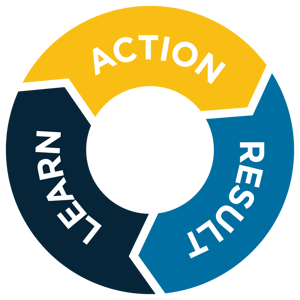 I joined a Clubhouse discussion the other day and one of the listeners posed the question, “What social platforms should I be on and why? I’m still trying to figure out where I want to be.” I hear this question a lot whether it’s an individual or a company asking. I also hear a lot of people talking about the subject. So if it was that easy of an answer, no one would be asking or talking about it, right? So then why does it continue to be brought up?
I joined a Clubhouse discussion the other day and one of the listeners posed the question, “What social platforms should I be on and why? I’m still trying to figure out where I want to be.” I hear this question a lot whether it’s an individual or a company asking. I also hear a lot of people talking about the subject. So if it was that easy of an answer, no one would be asking or talking about it, right? So then why does it continue to be brought up?
It’s simple because the answer to the initial question is - it depends.
How Social Media Has Grown
Today, globally, there are over 3.6 billion people using social media and the number is only projected to increase. While the days of MySpace and Vine are gone, they’ve been replaced by countless other apps including Twitter, Facebook, LinkedIn, Pinterest, Instagram, and the list goes on. There are even new apps coming out frequently including TikTok and Clubhouse.
Many companies that I’ve seen mainly have accounts with Twitter, LinkedIn, Facebook and occasionally Instagram. Just when you thought there were enough social platforms, each one continues to evolve their features to include stories, audio only, and more to try to compete with one another. Now instead of juggling new platforms, we’re having to juggle new platforms AND new features.
As these platforms continue to upgrade and grow, it can be challenging and overwhelming to figure out if you should hop on the app or try out the new feature. How do you do it all without cracking under the pressure to perform well?
You Don’t Have to be Everywhere to be Important
 Here’s your answer - you and/or your company doesn’t have to be on every single platform. Trying to have a presence everywhere can be just as bad as being nowhere. If you can’t put dedicated time into what you’re doing, you aren’t going to put out meaningful content for your audience, customers, and prospects.
Here’s your answer - you and/or your company doesn’t have to be on every single platform. Trying to have a presence everywhere can be just as bad as being nowhere. If you can’t put dedicated time into what you’re doing, you aren’t going to put out meaningful content for your audience, customers, and prospects.
I would also bet that your audience isn’t on every platform, so if you are anywhere they aren’t, you could be speaking to people that don’t care about what you’re talking about. If a tree falls in the middle of the woods and no one is around to hear it, did the tree really fall? It’s important that you find the few places your audience is present, be present there, and engage with them. It’s one thing to be on an app, it’s another to engage with the people there.
How to Find Where Your Audience Is Online
There are numerous ways to find out what social platforms your audience is on and actively engaged with, but let’s look at these main three:
1. Social listening. Many apps, like Twitter, and third party platforms have the ability for you to track and listen to what others are saying about specific words, phrases, or handles. By taking some time to social listen, you’ll be able to determine if your audience is on the platform or not. And if they are, you can become part of the conversation. This also gives you the opportunity to engage with what your prospects/customers are struggling with and provide them with helpful information.
2. Search directly for your prospects. If you have a list of target companies and contacts within those companies, you can easily look to see if they have profiles on specific apps that you would like to join. You don’t have to follow them, but it’s a good way to double check their whereabouts.
3. Turn to your personas. Buyer personas are one of the first things you set up for your business, and they should include a section of where those key people get their information or where they spend their time. That includes social media! If they’re created correctly, you should have information already on where you can find your audience.
Testing Out Social Platforms
 There’s nothing wrong with wanting to test out a social app to see if it fits you or your company. Before you go into testing, what is it that you are looking to achieve? Create a hypothesis for the test you run, too. That way you can determine at the end of the trial period whether or not it’s worth your time, energy, and possibly money.
There’s nothing wrong with wanting to test out a social app to see if it fits you or your company. Before you go into testing, what is it that you are looking to achieve? Create a hypothesis for the test you run, too. That way you can determine at the end of the trial period whether or not it’s worth your time, energy, and possibly money.
As you’re conducting your test, if you notice, for example, a younger audience is using the app, and your business is geared towards an older audience, it might not be best for you to focus your time there. Again, it’s okay not to be on every platform.
Early Adopters
There’s a group of people (Early Adopters) that are always first to try the new thing that comes out. They want to stay ahead of the curve and jump on the next new thing right away because there is an advantage to being one of the first to engage. It is okay to wait and do research before you decide to follow suit. So, the next time a new feature or social media app comes out, think about the pros and cons to being an early adopter before you just hop on the bandwagon.
Pros
- You get to be one of the first to experience what things are like, how to use the app/feature, and you’re able to drive the path for others coming to the app later.
- You’ll gain more experience on how to do well in that space.
- You’ll have the ability to put out more content and establish a presence there, which can help prospects find you and should increase your engagement.
Cons
- There’s a chance your audience will never come to use the app or feature which wastes you and your company’s time and effort.
- You get to work through all the downfalls and frustrations of the app/feature before they have a chance to fix all the bugs.
- It could feel like a stranded island if not many people are adopting and using the new thing. So while you can create a lot of content, if no one else is there to see it, who are you creating it for?
What Social Media Platforms Do You Want To Be On?
Whether you’re on social apps as a business, personally, or both, you have to keep in mind that every platform will need a different strategy. You aren’t going to be able to do the same things and get the same outcomes everywhere you go.
 If you don’t know already, Imagine used to be on Facebook. We left in 2019. While we still have an account, we don’t post or interact there anymore, and that was a company decision. Most of our employees still have their own accounts for their own reasons. I say this to show that just because you are personally on a social media app doesn’t mean your business has to be and vice versa (although you being on the same platforms as your business can help get new posts shared).
If you don’t know already, Imagine used to be on Facebook. We left in 2019. While we still have an account, we don’t post or interact there anymore, and that was a company decision. Most of our employees still have their own accounts for their own reasons. I say this to show that just because you are personally on a social media app doesn’t mean your business has to be and vice versa (although you being on the same platforms as your business can help get new posts shared).
Another example is Clubhouse. While Imagine is not on the app, some of our employees are. The main thing to remember is that the places you choose to have an account should depend on what you would like to accomplish.
If you’re into taking photos or have a product you want to showcase, Instagram would be good because it’s image-based. Twitter is a good space to engage and bounce ideas back and forth. LinkedIn is more in the professional realm, sharing accomplishments, job descriptions, and more in-depth thoughts and opinions. The list goes on.
You also need to make sure you are with the right group of people. If you aren’t enjoying an app, it could be that you haven’t found your kindred spirits. It could also be because you’re using the app for the wrong purpose, your audience isn’t there, etc. At that point it’s time to step back, reevaluate what you’re doing and why you are there, make some adjustments and see if that changes anything. It could also be that it just isn’t for you, and at that point stop wasting your time!
5 Lessons & Actions to Walk Away With
If there are 5 things you should remember or do after reading through all of this, it’s that:
-
It’s perfectly fine to not be present on every social media platform and it’s perfectly fine to not take part of every new feature those platforms put out.
-
If you are currently on every single platform, take into consideration what you’re doing there, whether you are gaining any value from it (or if you could find value in staying there), and adjust your position and strategy. It might be time to close down some of your accounts you never use or ones which are lacking in engagement/value.
-
Testing new apps is beneficial to see whether the juice is worth the squeeze, but know at the end of the day if it isn’t a match, don’t stay there.
-
Be where your audience is and connect/engage with them. When you’re connecting with them, make sure you keep to your brand’s voice. This should be outlined in your editorial philosophy.
-
Social media is going to continue to evolve and transform. We have to be ready for it. Start putting together a plan for how your business is going to adjust to those changes and make sure you leave some wiggle room for testing.
The next time you ask yourself “should we be part of this new app” or “should we also be using this new feature,” take the time to decide if it’s a right fit. The worst thing you can do is stretch yourself too thin.


